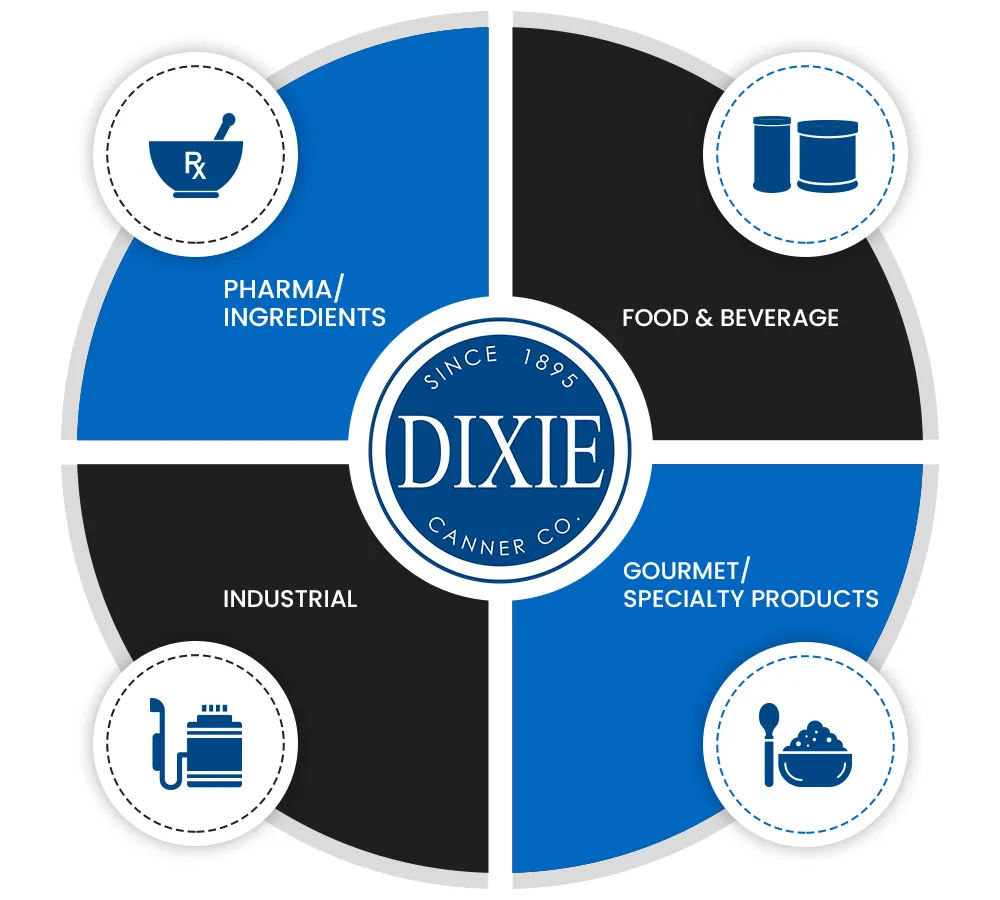Dixie Canner, founded in 1895, has made the technology of canning and packaging accessible to the public. Dixie Canner makes maximum performance packaging and processing equipment for a variety of industries that use metal, plastic or composite with metal enclosures, or cans.
THE LEADER IN MANUFACTURING CAN SEAMERS AND RETORTS FOR OVER 125 YEARS
Dixie Canner Company manufactures Can Seamers – Atmospheric Can Seamers, Vacuum Can Seamers, Vacuum with Gas Flush Can Seamers and Multi-Flush Can Seamers; Vertical Still Stainless Steel Retorts – Manual Retort Operation or Auto Control Retort Operation; Stainless Steel Food Processing Equipment – Line Exhausters, Lye Peeler-Scalders, Steam Blancher-Coolers, Sinks and Tables. All Can Seamers, Retorts and Food Processing Equipment is manufactured in Athens, GA USA. Our Can Seamers and Retorts fill the need for low-volume canning and packaging machinery for the food and beverage, ingredients and gourmet, industrial products, pharmaceutical, and specialty products industries… around the world.
Can Seamers hermetically seam metal lids onto round, rigid containers – metal (all types), paper (composite) or plastic. Dixie Canner Company manufactured our first hand crank can seamers in 1895. Our Can Seamer expertise and manufacturing capabilities are second to no one.
CROWLERS
The top six reasons why breweries across the nation choose to buy our Dixie Model 25D can seamer:
- Made right here in the U.S.A.
Dixie Canner Seamers have been manufactured and fabricated in Athens, GA U.S.A. for over 125 years. - Great combination of size and power
With an industry-leading small footprint of 7" x 10", our Model 25D can seamer packs an industrial punch producing up to 900
cans per hour. LEARN MORE >>
CAN SEAM INSPECTION
Can seam evaluation is the responsibility of company that is filling and closing the can package. Depending on the type of products that are canned, food/beverage, pharmaceuticals, etc., there are specific regulations on how and when can seam evaluations are to be done, as well as documentation and reporting guidelines. Your Quality Assurance program should, at a minimum, include hourly visual seam inspections, and a complete seam tear-down every four hours. A physical report of the complete seam tear-down should be also be completed and kept on file. LEARN MORE >>


















